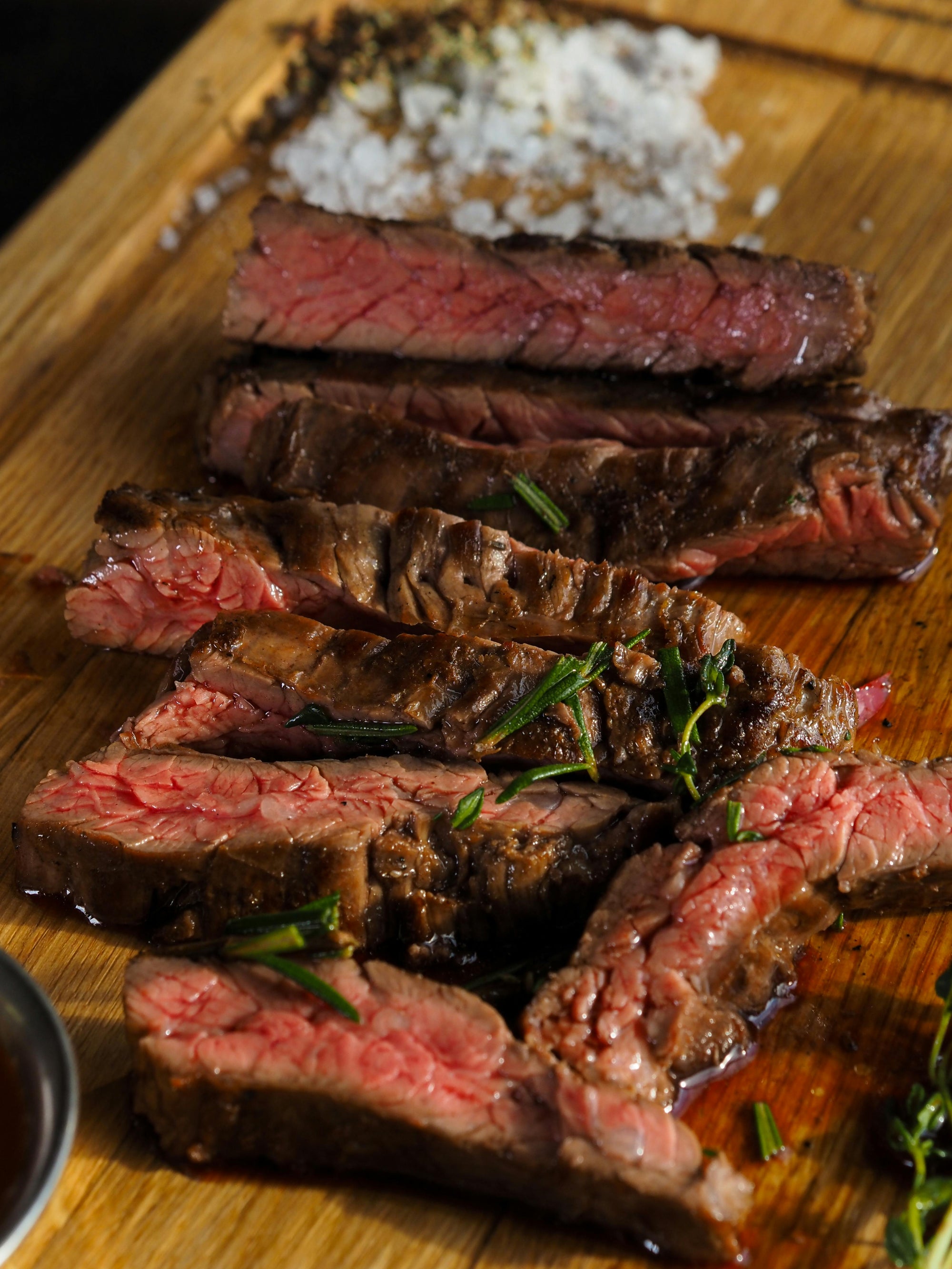

· By Scott Wells
The Many Nutritional Benefits of Grass-Fed, Grass-Finished, Pasture-Raised Beef
(And Why It’s Better Than Grain-Fed Feedlot Beef)
Not all beef is created equal. Grass-fed, grass-finished, pasture-raised beef is one of the most nutrient-dense foods on the planet. Packed with high quality, bioavailable protein and healthy fats, it also delivers an impressive array of naturally occurring vitamins and minerals essential to optimal nutrition. But what exactly makes it superior to grain-fed, feedlot beef? Let’s break it down.
Core Benefits
-
High in protein
-
Protein is bioavailable and has complete amino acid profile
-
Healthy fats
-
Nutrient dense
-
Complete amino acid profile
-
Loaded with naturally occurring vitamins and minerals
-
No Junk – Rarely any hormones or antibiotics commonly found in grain-based feed—just pure, natural beef.

Protein Power: Why Quality Matters
Protein is essential for muscle growth, recovery, and overall health, but not all protein sources are equal in quality and digestibility.
-
23g protein per 100g serving – A complete protein with all essential amino acids. [Source: USDA Food Data]
-
92% PDCAAS score – One of the highest protein digestibility ratings available. [Source: The Journal of Nutrition]
-
Higher protein-to-fat ratio – Grass-fed beef has a leaner protein-to-fat balance compared to grain-fed.
Healthy Fats: The Right Kind of Fat Matters
Not all fats are bad. In fact, grass-fed beef contains more healthy fats that support heart, brain, and metabolic health.
-
✅ 2-3x more Omega-3 fatty acids – Essential for brain and heart health. [Source: Animal Science, Texas A&M]
-
✅ Better Omega-6 to Omega-3 ratio – Typically 2:1 or 3:1, compared to 6:1 or worse in grain-fed beef. [Source: NIH]
-
✅ Higher CLA (Conjugated Linoleic Acid) – Grass-fed beef has 2-3x more CLA, linked to reduced inflammation and improved body composition. [Source: INAC]
Nutrient Density: More Than Just Protein
We know that quality beef and steak provides an array of vitamin and mineral nutrients–Vitamns, A, K and E, as well as B12, beta-cartene, heme iron and zinc. But compared to grain-fed, conventional beef, grass-fed beef delivers a micronutrient advantage that grain-fed beef simply can’t match.
-
🥩 Higher Vitamin A & E – Supports vision, skin, and immune health.
-
🥩 3x more beta-carotene – An antioxidant precursor to vitamin A. [Source: Journal of Animal Science]
-
🥩 2x more B12 – Crucial for energy metabolism and brain function. [Source: USDA via NIH]
-
🥩 15% more bioavailable heme iron – Supports red blood cell production better than plant-based iron.
-
🥩 30% more zinc – Essential for immune function and hormone regulation. [Source: NIH and Meat Science Journal]

Detailed Nutritional Comparison
|
Nutrient |
Grass-Fed Beef |
Grain-Fed Beef |
|
Protein |
23g per 100g |
23g per 100g |
|
CLA |
2-3x higher |
Baseline |
|
Omega-3s |
2-3x higher |
Baseline |
|
Omega-6:3 Ratio |
2:1 - 3:1 |
6:1 - 8:1 |
|
Vitamin A |
2x higher |
Baseline |
|
Vitamin E |
3x higher |
Baseline |
|
B12 |
2x higher |
Baseline |
|
Zinc |
30% higher |
Baseline |
|
Heme Iron |
15% higher |
Baseline |
|
Beta Carotene |
3x higher |
Baseline |
Why Grass-Fed Wins: Key Takeaways
💯 Superior Nutrition – More omega-3s, CLA, vitamins, and minerals than grain-fed
🚫 No Junk – No hormones, antibiotics, or grain-based feed—just pure, natural beef.
🦠 Better Absorption – Nutrients are more bioavailable in grass-fed beef, meaning your body can actually use them.
🌎 Regenerative Impact – Supports soil health, biodiversity, and carbon sequestration—unlike destructive feedlot systems.

The Latest Research: Regenerative Beef is the Future
The latest research from Utah State University (2023) found that grass-fed beef contains significantly more phytochemicals that protect against oxidation and inflammation.The study also found that the very-long chain fatty acids in grass-fed beef contribute to reduced risk of heart disease and improved brain function. [Source: Utah State Research] Another study from the Journal of Agriculture and Food Chemistry highlights that grass-fed beef has a higher antioxidant content, preserving its nutritional quality while delivering health benefits to consumers. [Source: ACS Journal]
Final Thoughts
Not all beef is created equal. When cattle eat what nature intended—grass—they produce meat that’s healthier, richer in nutrients, and more bioavailable for your body. Feedlot beef, pumped with grain and soy, simply can’t compare.
At Wild Horizon, we don’t cut corners. Our bars are made with real, regeneratively raised beef, free from fillers, preservatives, and artificial ingredients.
When cattle are raised on pastures eating what they were intended to eat naturally, we all benefit–humans benefit nutritionally, cattle benefit in quality of life and the environment benefits through the natural regenerative process of cattle turning grass into fertilizer into healthier soil and grasses.
